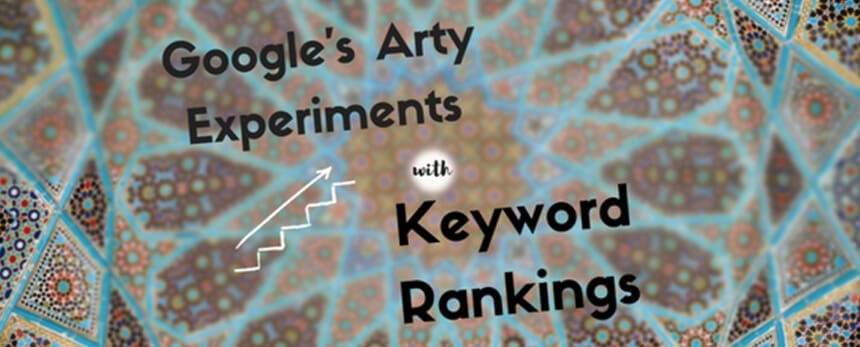
Boost your rankings and attract more customers through our SEO expertise.

Keyword rankings change all the time. It makes sense most of the time. Consistently producing engaging, relevant content? Your keyword rankings should exceed your competitors’. A competitor finally sorted out their categories? Their keyword rankings will probably rise, too. But what about when the fluctuations seem to occur out of nowhere? Following some original research, we’ve concluded that Google has more going on in the background than most people realise. Read on to look at our findings and discover the real reason why your keyword rankings may be changing.
You’ve probably heard more than one SEO claim that what they do is an art. We’re certain most artists would disagree, but in this case, what you’re going to see actually does look like art. It all started when we were tracking the keyword visibility of several different brands using the Authoritas keyword tracker. The keywords we’re measuring are all non-branded terms, and the graph below is a SERP Market Visibility Share chart. They say “data is beautiful,” but take a look at this: 
(Data from Authoritas)
As you can see, there are two big players in this space which outrank all the others. The keyword visibility for Brand A (the red line) and the keyword visibility for Brand B (the blue line) fluctuate in direct correlation with one another. Where one brand’s market visibility share rises 10%, their competitor’s falls 10%. Where one brand’s market visibility share falls 5%, their competitor’s rises 5%. If you didn’t know better, you might think you were viewing a work of mirror art, not keyword data. Coincidence? Maybe if it were a one-off. But the data above spans from January 2017 to July 2017. That’s six months of direct correlation. According to the rules of SEO, this shouldn’t happen. Based on this data, we can conclude that Google is running A/B tests on specific competitor sites in order to see which performs better and delivers the superior user experience. Clickthrough rates, bounce rates, number of purchases . . . Google could be measuring any number of metrics between these two sites. It will be interesting to see if the test is still running in another six months – or if Google will have finally selected the better-performing site to rule the SERPs.

Subscribe to our monthly newsletter.
Some might say this isn’t fair, and of course it isn’t. We’re of the opinion, however, that brands in this position should count themselves lucky. Is it really such a bad thing to be considered authoritative enough by Google to be placed into such an experiment? These “arty” experiments should keep us all on our toes. If you let your SEO optimisation slide, you’re certain to lose organic market share over time – especially if your industry has a significant mobile or local audience. So, always know where your site sits in the SERPs, and respond to any changes by continually optimising your site for your chosen keywords. Google just wants to deliver the best user experiences to its users. So, let’s deliver.
Digital marketing is like any art. It’s can seem unpredictable at times, and sometimes even uncontrollable. But once you figure out its inner workings, you can begin to understand how it works and, even more importantly, how to control it and create something amazing. Have you discovered similar trends for your keyword rankings? Contact DAC – we’d love to learn more about how these experiments work and how the results have been actioned.
Subscribe to our monthly newsletter.